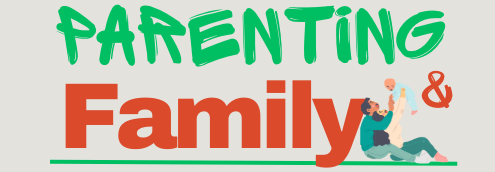Hey there, fellow parent! Let’s talk about something we all want but sometimes feel like we’re failing at: positive parenting.
You know, that magical approach where you stay calm, connected, and in control while your kids listen, cooperate, and maybe even say “thank you” without being prompted? Sounds dreamy, right?
But let’s be real for a second. Parenting is hard. There are days when you’re so exhausted that the idea of staying positive feels like climbing Mount Everest in flip-flops.
I’ve been there—yelling over spilled milk, bargaining with a toddler who refuses to put on pants, and wondering if I’m doing anything right.
The good news? Positive parenting isn’t about being perfect. It’s about progress.
It’s about finding solutions that work for your family and creating a home filled with love, respect, and connection.
So, grab your favorite drink (coffee, tea, or something stronger—I won’t judge), and let’s dive into some positive parenting solutions that can help you raise happy, confident kids without losing your mind.
What Are Positive Parenting Solutions?
Positive parenting solutions are strategies that focus on building a strong, loving relationship with your child while teaching them important life skills like responsibility, empathy, and self-discipline.
Instead of relying on punishment or control, positive parenting emphasizes connection, communication, and collaboration.
For me, positive parenting started as a survival tactic. I was tired of the power struggles, the tantrums, and the guilt that came with losing my temper.
I wanted a better way—for my kids and for myself. That’s when I discovered the power of positive parenting.
Why Positive Parenting Works

Positive parenting isn’t just a feel-good approach—it’s backed by science. Research shows that kids who are raised with positive parenting techniques are more likely to:
- Have higher self-esteem
- Develop better social skills
- Perform well in school
- Have stronger relationships with their parents
But here’s the best part: positive parenting isn’t just good for kids—it’s good for parents, too.
When you focus on connection instead of control, you’ll find that your home becomes a calmer, happier place.
My Top Positive Parenting Solutions
Ready to give positive parenting a try? Here are some practical, actionable strategies that have worked for me:
1. Focus on Connection
Before you correct your child’s behavior, connect with them emotionally. Get down to their level, make eye contact, and show empathy.
For example, instead of saying, “Stop hitting your brother!” try, “I can see you’re really frustrated. Let’s talk about what’s going on.”
2. Use Positive Reinforcement
Catch your child being good and praise them for it. Instead of focusing on what they’re doing wrong, highlight what they’re doing right.
For example, “I love how you shared your toys with your sister. That was so kind!”
3. Set Clear Expectations
Kids thrive on structure and consistency. Set clear, age-appropriate expectations and explain the reasoning behind them. For example, “We brush our teeth before bed to keep them healthy and strong.”
4. Offer Choices
Giving your child choices helps them feel empowered and reduces power struggles. For example, “Would you like to wear the red shirt or the blue shirt today?”
5. Teach Problem-Solving Skills
Instead of solving your child’s problems for them, guide them through the process.
Ask questions like, “What do you think you should do?” or “How can we fix this together?”
6. Practice Calm Discipline
When your child misbehaves, stay calm and focus on teaching rather than punishing.
For example, instead of yelling, “Go to your room!” try, “Let’s take a break and talk about what happened.”
7. Model the Behavior You Want to See
Kids learn by watching us. If you want them to be kind, patient, and respectful, show them what that looks like.
My “Aha!” Moments

One of my biggest “aha!” moments came during a particularly rough bedtime. My daughter was refusing to go to sleep, and I was at my wit’s end.
Instead of resorting to threats or bribes, I sat down next to her and said, “I can see you’re having a hard time. What do you need right now?”
She looked at me with tears in her eyes and said, “I just want you to stay with me.” In that moment, I realized that her behavior wasn’t about defiance—it was about connection.
By staying calm and present, I was able to turn a power struggle into a moment of bonding.
The Challenges of Positive Parenting
Let’s be honest: positive parenting isn’t always easy. There are days when you’re tired, stressed, or just plain human.
You might lose your temper, say the wrong thing, or struggle to stay consistent. And that’s okay.
The beauty of positive parenting is that it’s a practice, not a destination. It’s about progress, not perfection. When you mess up (and you will), apologize to your child.
Say, “I’m sorry I yelled. I was feeling frustrated, but that’s not your fault.” This not only repairs the connection but also models accountability and humility.
The Rewards Are Worth It
The more I’ve embraced positive parenting, the more I’ve seen the impact it has on my kids. They’re more confident, more cooperative, and more willing to talk to me about their feelings.
And honestly, it’s made me a better person, too. I’m more patient, more present, and more in tune with my own emotions.
A Motivational Summary
Parenting is a journey, and positive parenting is like a compass that helps you navigate the ups and downs with intention and love.
It’s not about being perfect—it’s about being present. It’s about showing up for your kids, even when it’s hard.
So, the next time you’re in the middle of a parenting challenge, take a deep breath and remind yourself:
This is an opportunity to connect, to teach, and to grow. You’ve got this.
A Little Wisdom to Carry With You
As we wrap up, I’ll leave you with this quote by Dr. Jane Nelsen, the founder of Positive Discipline:
“Where did we ever get the crazy idea that in order to make children do better, first we have to make them feel worse?”
Let’s keep focusing on connection, kindness, and growth—one positive step at a time.
What’s one small step you can take today to practice positive parenting? Share your thoughts in the comments—I’d love to hear from you.


